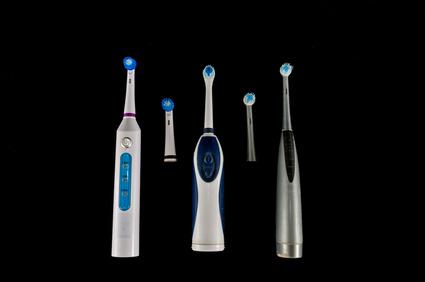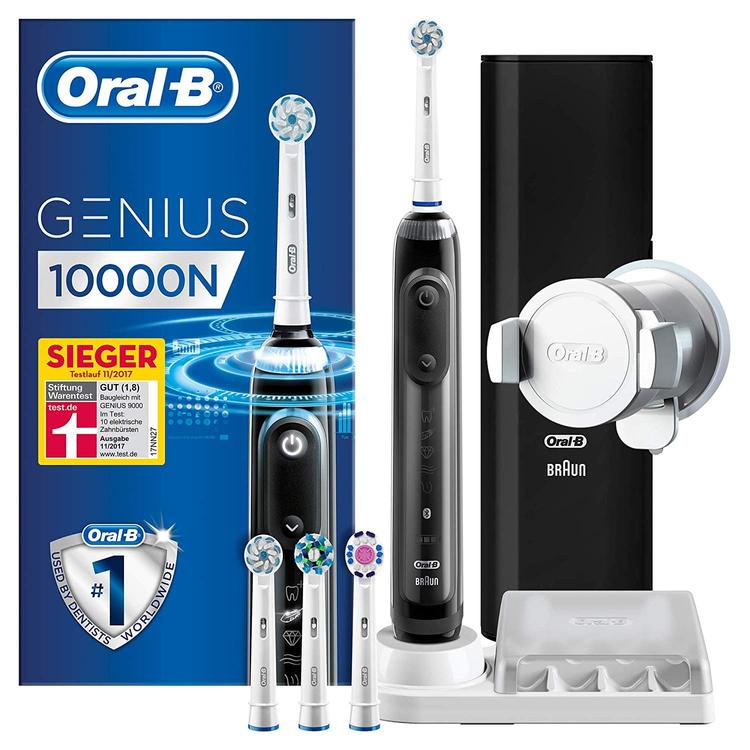They are considered to be more effective than manual toothbrushes. But even electric toothbrushes must be used with the right technology - there are significant differences depending on the model.
Overview
Some rotate back and forth, others vibrate. And then there are extras like pressure sensors and timers. Electric toothbrushes are available in a wide variety of designs. What is really important when it comes to the equipment and what should be considered when handling the electric brushes?
Rotation or vibration
So-called oscillating-rotating toothbrushes have round brush heads. According to the Stiftung Warentest, they typically make several thousand oscillating sideways movements per minute and also rotate back and forth at an angle of 50 to 70 degrees. Some also have pulsating movements. "This should also loosen the dental plaque," explains dentist Prof. Stefan Zimmer from the University of Witten/Herdecke.
Sonic toothbrushes, on the other hand, have elongated brush heads. According to Stiftung Warentest, they make 13,000 to 40,000 vibrating movements per minute. "The average frequency is 250 Hertz," says Zimmer.

The third option is brushes that oscillate in the ultrasonic range and thus in a much higher frequency range. However, according to Dirk Kropp, Managing Director of the ProDente initiative, they do not play a major role in the mass market.
A question of cleaning technique and diligence
In terms of quality, i.e. with a view to cleaning performance, the differences between the two techniques, oscillating-rotating and vibrating, are not great, says Lea Sophie Lukas from Stiftung Warentest. Which model is more suitable for whom is more a question of cleaning technique and diligence.
You have to brush each tooth individually for a few seconds with a rotating brush, explains Stiftung Warentest. It is also important to swing the brush head into the spaces between the teeth.
According to product tester Lukas, if you brush a little more carelessly, you can use the sonic brush to reach several teeth at once. Dentist Zimmer adds: "The sonic toothbrush is more forgiving if you don't have the right technique." According to the professor, the biggest advantage of sonic toothbrushes is that you can basically use them like a manual toothbrush.
Some brushes warn against too much pressure
If you know or have been told by your dentist that you are pressing too hard, you should make sure you choose an electric toothbrush with pressure control, advises Dirk Kropp. Their brushes reacted with blinking or humming if you pressed too hard. "The brushes that don't cost the earth also offer this," says product tester Lukas.
The Stiftung Warentest recently examined electric toothbrushes (magazine "test", issue 12/2020). One finding from the report is: not only consider the purchase price, but also the follow-up costs. You should find out how expensive the brush attachments are before you buy them. Because they should be changed every three months, recommends Lukas
The time factor when cleaning
It doesn't matter which technique you ultimately choose. Cleaning success is also a question of the time you take for it. "You shouldn't clean for less than two minutes," advises Lukas. That's why it's all the more gratifying that even the slightly cheaper brushes now have a timer or a cleaning time signal.
Dentist Zimmer emphasizes: Everyone needs different lengths because the teeth are very different.
Sources used:










Test winner at Stiftung Warentest:...
How to get the perfect look for Cos...
Dry elbows: This is how brittle ski...
Cream for Rosacea: The Best Creams